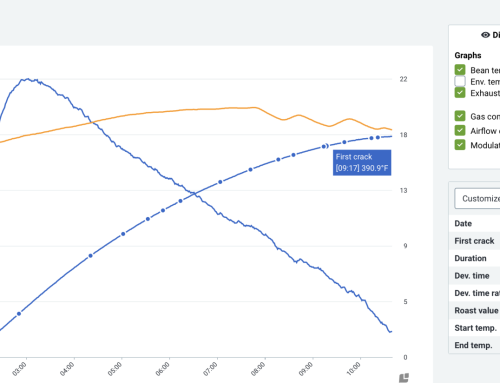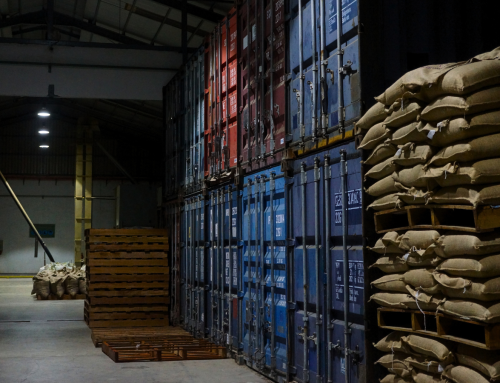Nicaraguan Coffee Production
Coffee plays a monumental role in Nicaragua’s history and economy. Since the mid-1850s, the government of Nicaragua has been encouraging the establishment of coffee estates. By the early 1990s, coffee plants had occupied more land than any other crop in the country.
Decades of political turbulence severely impacted the coffee trade and Nicaragua has spent recent years recovering economically. Despite many challenges, Nicaraguan coffee has persevered. Nicaraguan coffee farmers continue to produce large volumes of high-quality coffee consistently. The coffee supply chain employs over 330,000 people. Additionally, seasonal harvest work is a crucial source of income for the rural population. Today, Nicaragua is the 12th largest coffee-producing country in the world, and 98% of its output is Arabica coffee.
Coffee production in Nicaragua is highly centralized. The vast majority of Arabica coffee farms (~85%) are located in three main regions: Jinotega, Matagalpa, and Nueva Segovia. Robusta production, on the other hand, is concentrated along the Southern Caribbean Coast. However, with the Robusta market becoming red hot, growing areas are expanding to accommodate more Robusta production.
Around 45,000 Nicaraguan smallholders cultivate coffee across 143,000 hectares of land in Nicaragua. The Agricultural Census of 2011 showed that 71% of coffee farms had fewer than 15 hectares. Those small farms produce just 37% of Nicaragua’s total coffee volume. In contrast, medium and large-sized estates (15-70 and over 70 hectares, respectively) produce the remaining 63% of Nicaragua’s coffee volume. For a full overview of Nicaragua’s coffee industry, read our 2023 origin report here.

Nicaraguan coffee farmer tossing coffee cherries
Nicaragua Coffee Volume Forecast
According to the USDA, Nicaraguan coffee production dipped by around 10% in the 23/24 harvest. The country’s total output came in at around 2.41 million bags due to El Nino adversely affecting coffee-cherry development after the flowering phase of the coffee trees.
However, there are still reasons to believe in Nicaraguan coffee. The Foreign Agricultural Service predicts a production rebound to 2.6 million bags for 2024/2025. The report cites better weather conditions and greater access to higher-yielding coffee varieties.
Challenging Nicaraguan Smallholders
Nicaragua’s main challenge in the coming year is the outbound migration of the population to the USA. The hit to harvest labor could be severe. Costs have gone up due to the labor shortage, and potentially, coffee yield will be lowered because fruit is left on the trees.

Nicaraguan coffee pickers carrying sacks of coffee
Despite recent years of high coffee prices, most smallholders in Nicaragua have yet to be able to commit to proactive farm management and investment, falling short of an ideal replanting schedule after the 2013 coffee leaf rust outbreak. Affordable financing is already difficult to access, and the 2023 bankruptcy of a major coffee exporter and lender will make loans even harder to procure.
The Government of Nicaragua is focused on funding farm renovation and providing tax breaks to coffee farmers. Since 2013, Law 853 has collected a fee (around $4) on every bag of coffee exported to fund the renovation of aging coffee farms. However, the initiative has been met with mixed opinions on its impact. In 2019, the government passed a new tax on fertilizers and agrochemicals for the first time, making inputs even more expensive for producers already struggling to invest in their crops.

La Bastilla Coffee Estates sign
La Bastilla Coffee Estates and Long-Term Sustainability
Genuine Origin’s longstanding sourcing partner in Nicaragua, La Bastilla Coffee Estates, constantly surprises us. In May 2024, we checked in with Ricardo Herrera, CEO of La Bastilla, to see how a larger estate of over 300 hectares, 155 of which grow coffee, has weathered Nicaragua’s recent challenges.
According to Ricardo, 2023 was one of the most intense El Niño seasons he experienced recently. Although La Bastilla also had a drop in coffee production volume, the impact would have been much worse if they followed a more reactive style of agronomy rather than their enduring proactive approach.
“You will see the results of everything you do on the farm today in two to three years. We ended up with just a small drop in production, not because of what we did with the farm last year but three years before,” says Ricardo. “Our trees entered the El Niño cycle very well fertilized, with a lot of energy reserves, and no fungus or bacteria, which was a game changer.”

Nicaraguan coffee cherry collection
In 2023, flowering coffee trees endured a two-month dry period during a critical stage of cherry development. Because trees on La Bastilla were so healthy, they could hold on until the rains came. Other farms weren’t so lucky.
However, the staggered and varied cherry development brought three waves of light coffee borer activity. The tiny beetle is the most harmful insect to affect coffee plants, but when their impact is light, it can be much harder to detect. While machine sorters can pick up a heavy infestation, producers must be more careful when the damage goes undetected.
Optimizing Coffee Production Through Micro-Farms
Despite the challenges, La Bastilla records good growth and high quality in the 2023/2024 harvest. Coffee production at La Bastilla is very organized and designed to maximize the various microclimates on the estate, with different coffee varietals best suited for specific conditions. The land is defined by two large slopes that face each other, with a strong Atlantic influence and stark changes in sunlight throughout the day.

Micro-farm at La Bastilla Coffee Estate in Nicaragua
In the microfarms at higher altitudes, like Llamada and San Pedro, varieties like geisha and the H3 F1 hybrid thrive in the cold. That’s where mucilage concentration can develop, leading to high cup quality. Similarly, in Las Brisas, where it’s high up, cold, and windy, the H1 Centroamericano variety flourishes.
The mix of microclimates means La Bastilla can grow a variety of coffees (and subsequently, cup profiles) on the estate. Additionally, because La Bastilla processes everything in-house, they maintain control of quality until the coffee is exported. Processes in which La Bastilla boasts expertise include: natural, washed, honey, anaerobic, fermented, and yeast-assisted processes. La Bastilla’s expansive capabilities allow the estate to produce a whopping 150 micro-lots per season.
La Bastilla started experimenting with anaerobic fermentation three years ago. They purchased four dedicated stainless-steel tanks equipped with temperature control and valves to pull out mucilage samples for the process. “As oxygen levels drop, the bacteria go into an anaerobic state, and you have to be careful of their pH levels,” says Ricardo. “[The anaerobic process] is a combination of temperature, pH, and time, which is why you have to be able to pull samples and monitor the pH levels daily.”
Washed lots like this SHG/EP geisha are processed in a fully integrated wet and dry processing plant equipped with a bio-digester to treat any wastewater. This innovation ensures that the highly acidic water left over from washed processing is not reintroduced into the ecosystem.
A diverse mix of new Nicaragua green coffees is now in stock at Genuine Origin’s warehouses. Check out our full Nicaragua green coffee collection lineup on our website: https://www.genuineorigin.com/nicaragua






